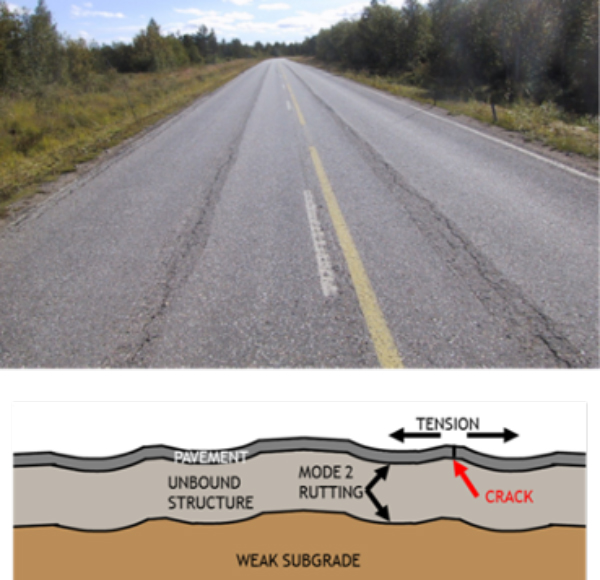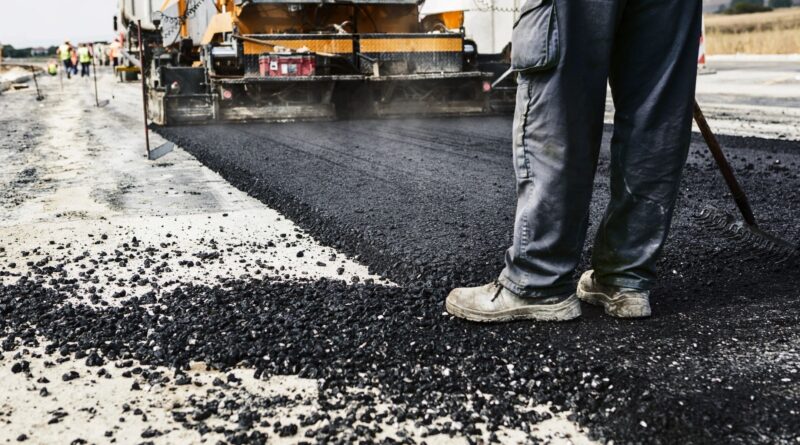Highway Engineer interview Question | civil engineering
What is Kerb?
Kerb is a separator between pavement and footpath. It also provides lateral support to the pavement.
What is rutting?
Horizontal curve without super elevation imparts centrifugal force in outward direction of curve. Due to that pressure on outer wheel of vehicles increases, it imparts more pressure on outer edge of pavement, due to which consolidation occurs at one or more than one layer of pavement, which is called ruts and the process is known as rutting.

What is super elevation/cant/banking ?
To counter balance the centrifugal force and to reduce the tendency of vehicle to overturn or skid, the outer edge of the pavement is raised with respect to the inner edge, thus providing a transverse slope throughout the length of the horizontal curve. This transverse inclination is to the pavement surface is known as super elevation.
What is Floating gradient?
The gradient at which no tractive effort is required to maintain a constant speed by the vehicle, is known as floating gradient. The gradients less than the floating gradient require some tractive effort to maintain a constant speed by the vehicle and the gradients more than the floating gradient result in increase of speed.
What is the difference between a standard proctor test & a modified test?
Modified test have the 5 times greater comp active energy than in the standard test and a higher value of dry density is obtained in the modified Proctor test as compared to the standard proctor test.
Why we provide transition curve on highways?
Transition curve is provided to change horizontal alignment from straight to circular curve gradually. This curve has a radius equal to infinite at straight road and gradually changes to designated radius at circular curve. Objective of transition curve are
- To gradually introduce the centrifugal force between straight and circular.
- To avoid sudden jerk.
- To introduce superelevation gradually.
- To introduce extra widening gradually.
How do you calculate actual surcharge weight for C.B.R?
By the following equation
W = d x V x A
Where,
W = Actual Surcharge Weight
A = Area of Mould
d = Density of Material
V = Sum of the thickness of Layer
What is C.B.R?
C.B.R or California Bearing Ratio: It is a ratio of a force required to penetrate a sample to a certain depth (with 5 cm dia. Piston) to a force required to penetrate the sample of high-quality crushed stone with the same depth and piston
Define liquid limit and plastic limit
Liquid limit is the percentage of water contentin which the soil mass has a capacity to flow as a liquid. It is between the liquid and plastic state of soil.
Plastic limit is the percentage of water content in which the soil mass can be moulded without crumbling. It is in between the plastic and semi-solid state of soil.
What is raveling and its causes?
It is a progressive loosening or separation of aggregate particles in a pavement surface coarse from the surface downward or from the edge inward.
The causes are;
- Lack of compaction
- Construction in thin lift during cold weather
- Dirty or disintegrated aggregates
- Too little asphalt in the mix
- Overheating of asphalt mix
- Mix is very close to coarse
- Action of water
- Sensitive aggregate refuse coating due to special charge (anti-stripping materials must be used)
What are the modes of water penetration into road structure?
Modes of water penetration into road structure:
- Capillary rise of sub-soil water from beneath the pavement.
- Penetration of surface water from top of the pavement (percolation) mostly through cracks on the pavement surface.
- Penetration of sun-soil water from sides of the pavement
- Interception of water due to flooding of cross drains provided along the pavement.
- Interception of surface water from sides of the pavement.
At which depth the value of CBR is calculated or taken for design purposes.
Generally, the CBR (California Bearing Ratio) value at 2.5 mm penetration will be greater than that at 5 mm penetration and in such case the former shall be taken ad the CBR value for design purposes. If the CBR value corresponding to a penetration of 5 mm exceeds that for 2.5 mm, the test shall be repeated. If identical results follow, the CBR corresponding to 5mm penetration shall be taken for design.
Difference between Bitumen and Tar.
| S. No | Bitumen | Tar |
| 1 | It is manufactured by fractional distillation of petrol | Tar is manufactured by destructive distillation of coal and wood |
| 2 | Bitumen is more resistant to water | Tar is less resistant to water |
| 3 | Free carbon content is less in bitumen | Free carbon content is more in tar |
| 4 | It is soluble in carbon di sulphide and carbon tetra chloride | It is soluble in tolu |
What are the different types of joint?
- Transverse joints – Following are the transverse joints:
Expansion Joint – these joints are provided in the transverse direction to the pavement to allow expansion of slab when environment temperature is more than construction temperature.
Contraction Joint – these joints are provided in transverse direction to allow contraction of slab in order to prevent cracking due to tensile stress development as environment temperature is less than construction temperature.
Warping Joint – whenever the top and bottom have different temperatures, the slab tends to warp downward or upward inducing warping stresses. So, to prevent the warping of the slab warping joints are provided along the longitudinal direction of pavement. If expansion and contraction joints are properly designed and constructed, there is no need of providing warping joints.
Construction Joint – this is not a type of joint. Due to discontinuity of work construction joints are created. To avoid this in pavement construction, concreting should be stopped at expansion, contraction and longitudinal joint.
2. Longitudinal Joints – these joints are provided in the direction of traffic and tie bars are used to connect two slabs in lateral direction in order to prevent lateral sliding due to dynamic forces, expansion, contraction etc.
Name some various charts and their importance related to traffic study.
Following are the important charts:
- Trend Chart – trend chart shows the traffic volume trend over a period of year. This chart is used for the calculation of rate growth of traffic and also used for planning and future expansion.
- Variation Chart – this chart shows hourly, daily and seasonal variation. Variation chart helps in deciding the facilities and regulation needed during peak traffic period. Ex. During peak flow a particular class of vehicle is restricted to one road and diverted to another road.
- 30th Highest hourly volume – As per Indian Road Congress (IRC), 30th highest hourly volume is considered as design hourly volume. This volume is exceeded only 29 times in a year and all other traffic volume will lie lesser than that. Generally, this volume is 8% to 10% of average daily traffic (AAT). It is observed that 30th highest hourly volume gives a satisfactory result in terms of performance and it is economical in nature.
For which sight distance valley curves are designed and why?
Valley curves are designed taking headlight sight distance (HSD) into account. We use HSD for valley curve because at day time there is no restriction to sight distance but during night in absence of street light, the only source of visibility is head light. The visible distance through headlight is known as HSD.
Why lesser gradient is provided at higher elevation?
At higher elevations lesser gradient is provided because at higher elevations, availability of oxygen is less due to which less fuel burnt by vehicles and hence it reduces the pulling power of vehicles.

